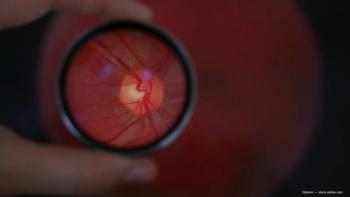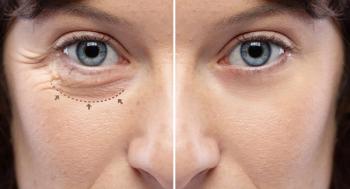
Oyster Point Pharma announces varenicline solution nasal spray for treatment of dry eye to be covered by key Medicare pharmacy benefit manager
Oyster Point Pharma Inc. today announced that the largest Medicare pharmacy benefit manager in the United States will add its varenicline solution nasal spray (Tyrvaya) for the treatment of dry eye on its Medicare Part D formularies, effective September 1.
Oyster Point Pharma Inc. today announced that the largest Medicare pharmacy benefit manager in the United States will add its varenicline solution nasal spray (Tyrvaya) for the treatment of dry eye on its Medicare Part D formularies, effective September 1.
According to Jeffrey Nau, PhD, MMS, president and CEO of Oyster Point Pharma, the milestone will further expand patient access and enable continued momentum in eye care professionals prescribing the nasal spreay for the treatment of dry eye disease.
“In the United States, almost half of the total dry eye disease prescriptions are covered by Medicare, and we believe TYRVAYA provides a truly compelling treatment option,” he said in a statement. “We are committed to growing patient access and are looking forward to continue engaging with Medicare Part D health plans.”
The FDA in Ooctober 2021 approved the varenicline solution nasal spray for the treatment of the signs and symptoms of dry eye disease.
According to the company, varenicline solution nasal spray 0.03 mg is a selective cholinergic agonist that is FDA-approved to treat the signs and symptoms of dry eye disease as a multidose nasal spray. The parasympathetic nervous system, the "rest and digest" system of the body, controls tear film homeostasis partially via the trigeminal nerve, which is accessible within the nose.
The company noted that the efficacy of the spray in dry eye disease is believed to be the result of varenicline's activity at heteromeric sub-type(s) of the nicotinic acetylcholine (nACh) receptor where its binding produces agonist activity and activates the trigeminal parasympathetic pathway resulting in increased production of basal tear film as a treatment for dry eye disease. Varenicline binds with high affinity and selectivity at human α4β2, α4α6β2, α3β4, α3α5β4 and α7 neuronal nicotinic acetylcholine receptors. The exact mechanism of action is unknown at this time.
Newsletter
Don’t miss out—get Ophthalmology Times updates on the latest clinical advancements and expert interviews, straight to your inbox.









































